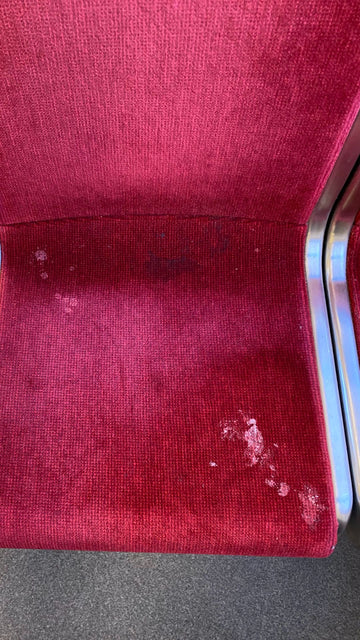Millions of people take public transit everyday. Whether you’re riding the TTC in Toronto, the MTA in New York, or Calgary Transit, there’s an uncomfortable truth about public transportation: bus seats are gross, subway seats are gross, train seats are gross. They're all teeming with dirt and germs. These seats, used daily by tens of thousands of people, harbor bacteria, allergens, germs, dirt, and other unwelcome contaminants.
You have good reason to hesitate and think before sitting down
How Dirty Are Transit Seats?
While transit operators generally regularly clean their vehicles, keeping up with daily grime on seats can be difficult. Bacteria, dust mites, allergens, and even viruses can remain on these surfaces. Recent studies on public transportation systems, like this report from the CBC, highlight the invisible buildup of germs on transit seats across cities. According to health experts, transit seats can be as germ-laden as public bathroom floors or door handles in high-traffic areas.
An alarming analysis by Popular Science showed that subway seats in major cities like New York, Boston, and Chicago are hotspots for bacteria. Researchers found everything from skin bacteria to respiratory pathogens lurking on these seats.
What Makes Transit Seats So Dirty?
Transit seats are exposed to food, pet hair, dust, sweat, dirt, and even environmental pollutants. This makes seats difficult to sanitize. Many seats are upholstered, which can trap more particles than plastic or vinyl seating. Because upholstered seats absorb moisture, they can also become breeding grounds for bacteria, mold, and mildew.
Imagine a typical day on a TTC Line 1 train or a crowded MTA L train: passengers spill drinks, drop crumbs, sneeze, and unknowingly leave behind skin cells and oils. Multiply this by thousands of riders, and you have a surface that collects germs all day long. Even with nightly cleaning, the high turnover of passengers throughout the day means seats are rarely fresh.
Studies and Infographics Show Alarming Levels of Bacteria
Numerous studies reveal unsettling information about the bacterial load on public transit. According to ABC News the bacteria found on public transit seats include E. coli and other pathogens that can cause illness. Another infographic from TravelMath visually breaks down the types of bacteria lurking on seats in the New York subway and other major transit systems (there are even pics of someone culturing the various systems here). The data shows that transit seats can harbor germs associated with common colds, respiratory infections, and skin infections.
Protect Yourself on Public Transit
While avoiding public transit isn’t feasible for most commuters, there are ways to stay protected. Hand sanitizers and hand washing are helpful, but they don’t address the germs you may encounter on seats. That’s where SEATSQUARE comes in—this chic, portable seat cover offers a clean, personal barrier between you and unsanitary transit seats. Simple to use and washable, SEATSQUARE is a practical solution for anyone looking to enjoy a more hygienic commute.



